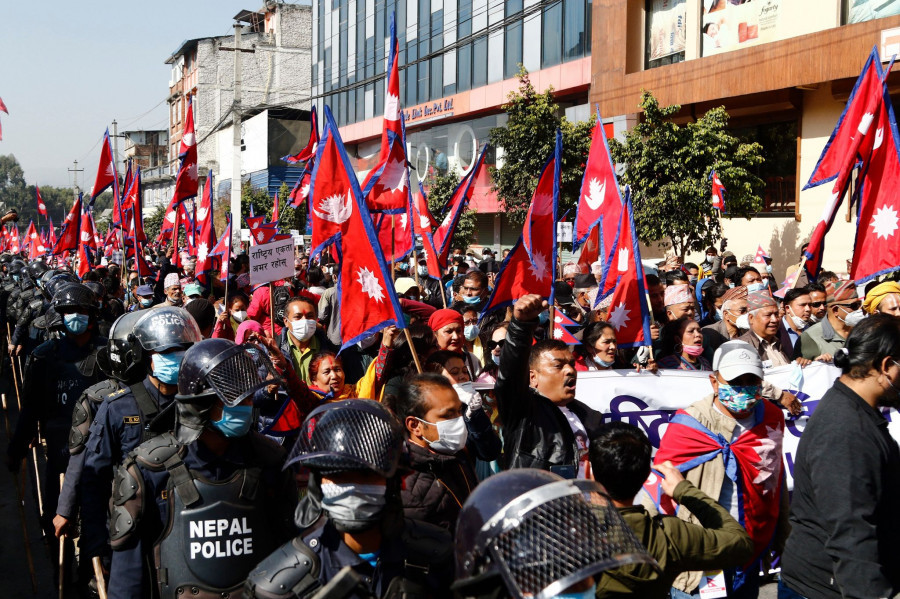Editorial
Worth preserving
We would do well to internalise the enormous costs at which recent democratic changes have come.
As Nepal prepared to mark its 74th Democracy Day, the European Union Ambassador to Nepal Veronique Lorenzo was reminding the country that six or seven years were nearly not enough to institutionalise federalism. What a tragedy that our foreign friends have to keep reminding us of this self-evident fact. But, for that matter, you could argue that even the tripartite agreement between the Rana regime, the Nepali Congress and the Nepali monarch that first heralded democracy 74 years ago happened because of an outside force: India. It was in New Delhi that the pact was signed, with India playing the mediator. Coming to 2005, New Delhi again hosted Nepali leaders as they signed the 12-point accord that would lay the foundation for the Comprehensive Peace Agreement (CPA) a year later. This in turn marked the end of a decade-long insurgency. Outside powers, especially India, are often invoked while trying to explain contemporary political developments in Nepal. Allegedly, it is the Europeans who imposed federalism and secularism on Nepal, even as India under Modi is now said to be trying to restore Nepal’s Hindu status.
This is a rather simplistic, lopsided story, we are afraid. It is true that Nepal’s political journey over the past 70 years has been rocky, with various outside forces jostling for influence. Yet the concepts of federalism, republicanism and secularism that are enshrined in the 2015 constitution are all befitting of a 21st-century progressive nation-state. So is an inclusive representation of all communities. There is thus nothing ‘foreign’ about them. Yet all these progressive changes are now coming under attack as efforts are being made to turn the tide and do away with key post-2006 changes. Why the rush to ditch the baby with the bathwater, one wonders. The 1951 Delhi Accord had provided for a constituent assembly so that the sovereign people would get to write their own charter. Yet the country had to wait for another six and half decades to elect such an assembly. The second Constituent Assembly had finalised the constitution in 2015 after seven hard years of deliberations.
This is the time to cement the achievements captured in the 2015 constitution. It is unfair to criticise the ‘failings’ of federalism even as its most important building blocks, the seven provinces, have not even started functioning autonomously in the absence of requisite laws, powers, and resources. Moreover, the tremendous progress in bringing service-delivery to people’s doorsteps is conveniently forgotten. The cries for the restoration of the hereditary monarchy who can lord it over his subjects are even more absurd. There is also no point in trying to restore the Hindu state when the current constitutional provisions give followers of all religions ample space to practise their faith, so long as one group does not try to impose its way of life on others. All forceful conversations are banned.
One beauty of the new constitution is that it is flexible enough to accommodate dissenting voices. But make no mistake, if its foundational pillars start shaking, it too could come tumbling down, as happened with the previous six constitutions of Nepal. That would be a disaster; the country cannot waste any more time trying to write the ‘perfect’ charter. As Nepal marks its 74th democracy day, we would all do well to internalise the enormous costs at which recent changes have come—and they are worth preserving. True, our democracy is far from perfect, yet as of today Nepal can also proudly call itself the most democratic South Asian state.




 7.12°C Kathmandu
7.12°C Kathmandu














